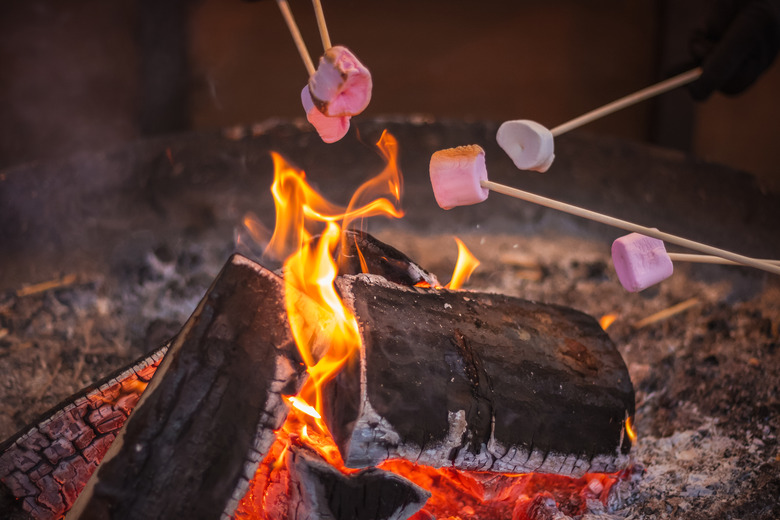A Science Fair Project On Whether Different Types Of Wood Burn Faster
Wood is one of man's oldest fuels, used for heating and cooking. In some areas, where burning wood may not be essential for survival, it is still used to save on heating costs, for emergency use or as a nostalgic pastime harkening back to our forefathers. Whatever the reason, a science project that determines the differences in combustion factors of various species of wood can be a meaningful experience.
The Theory
The Theory
There are hundreds of species of trees on earth; all of the wood from these trees will burn. However, the wood from each species of tree differs to some degree. Closely related species, such as white pine and red pine, would be expected to burn in a similar fashion. Non-related species, such as shagbark hickory and red cedar, would be expected to exhibit measurable differences when burned. Documenting these differences would produce an interesting science project.
What to Measure
What to Measure
Burn rate can mean two things, and both are easy to measure. One measurement is how quickly a type of wood will heat to its flash point and burst into flames. The second is how long it will take for the wood to burn until it is completely consumed.
The Experiment
The Experiment
Purchase a small piece of soft wood, such as pine, spruce, cedar or fir, and another piece of hard wood, such as oak, hickory or maple, from a lumberyard. Purchasing from a lumberyard will ensure that the wood will be equally dry or seasoned so that moisture content should not skew the results. Hard woods and soft woods are most likely to exhibit different burning characteristics, making the results easier to measure. Cut each piece of wood to the exact same size; a cube measuring exactly 1 inch along each edge is perfect.
Position a metal plate over a Bunsen burner, set one of the blocks of wood on the plate and light the burner. As soon as the burner is lit it will start heating, start timing the process with a stopwatch. Eventually, when the metal plate heats to the wood's combustion temperature, it will burst into flame. Immediately turn off the heat and note the time on the watch. Continue the timing and watch until the cube of wood extinguishes after burning completely and note the time. Repeat with the other sample of wood and compare the times.
If you wish, several species of wood can be tested.
Interpreting the Results
Interpreting the Results
The immediate results can be expressed in a chart which shows the time the sample takes to start burning and how long the sample takes to completely burn. If you would like to interpret the results, match the burn rates with the average growth rate for the species of wood being tested and note any correlations.
Cite This Article
MLA
Schoonveld, Mike. "A Science Fair Project On Whether Different Types Of Wood Burn Faster" sciencing.com, https://www.sciencing.com/science-types-wood-burn-faster-7962917/. 22 November 2019.
APA
Schoonveld, Mike. (2019, November 22). A Science Fair Project On Whether Different Types Of Wood Burn Faster. sciencing.com. Retrieved from https://www.sciencing.com/science-types-wood-burn-faster-7962917/
Chicago
Schoonveld, Mike. A Science Fair Project On Whether Different Types Of Wood Burn Faster last modified August 30, 2022. https://www.sciencing.com/science-types-wood-burn-faster-7962917/
